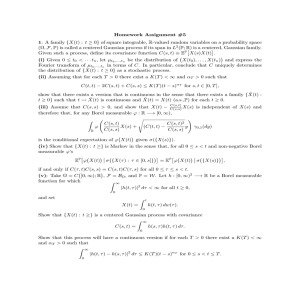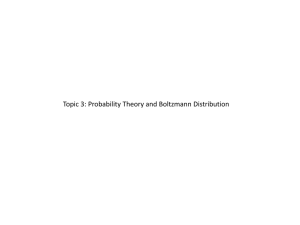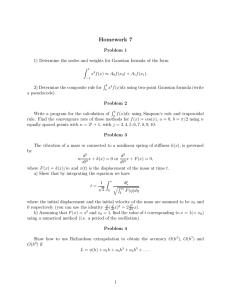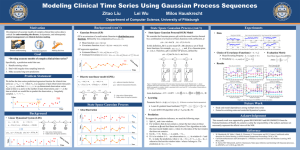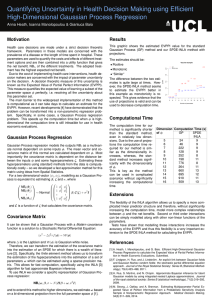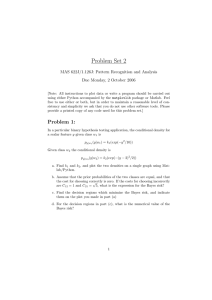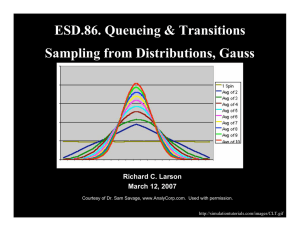Economics 706 Preliminary Examination, August 2015 Professor Francis X. Diebold
advertisement
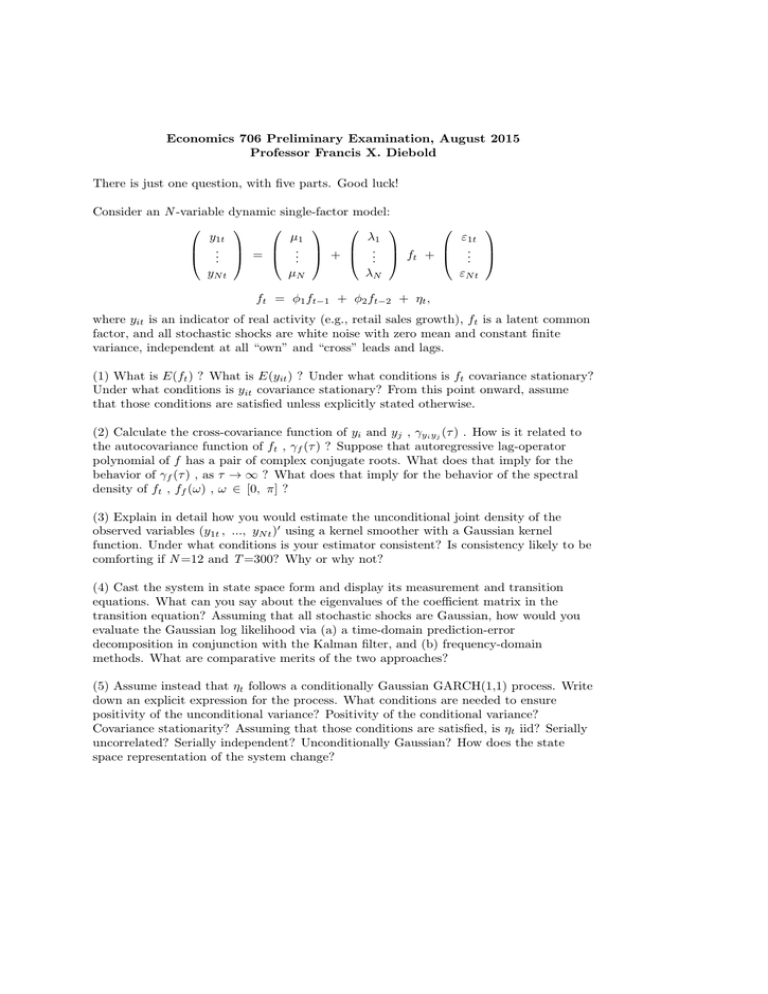
Economics 706 Preliminary Examination, August 2015 Professor Francis X. Diebold There is just one question, with five parts. Good luck! Consider an N -variable dynamic single-factor model: ε1t λ1 µ1 y1t . . . .. . = .. + .. ft + .. εN t λN µN yN t ft = φ1 ft−1 + φ2 ft−2 + ηt , where yit is an indicator of real activity (e.g., retail sales growth), ft is a latent common factor, and all stochastic shocks are white noise with zero mean and constant finite variance, independent at all “own” and “cross” leads and lags. (1) What is E(ft ) ? What is E(yit ) ? Under what conditions is ft covariance stationary? Under what conditions is yit covariance stationary? From this point onward, assume that those conditions are satisfied unless explicitly stated otherwise. (2) Calculate the cross-covariance function of yi and yj , γyi yj (τ ) . How is it related to the autocovariance function of ft , γf (τ ) ? Suppose that autoregressive lag-operator polynomial of f has a pair of complex conjugate roots. What does that imply for the behavior of γf (τ ) , as τ → ∞ ? What does that imply for the behavior of the spectral density of ft , ff (ω) , ω ∈ [0, π] ? (3) Explain in detail how you would estimate the unconditional joint density of the observed variables (y1t , ..., yN t )0 using a kernel smoother with a Gaussian kernel function. Under what conditions is your estimator consistent? Is consistency likely to be comforting if N =12 and T =300? Why or why not? (4) Cast the system in state space form and display its measurement and transition equations. What can you say about the eigenvalues of the coefficient matrix in the transition equation? Assuming that all stochastic shocks are Gaussian, how would you evaluate the Gaussian log likelihood via (a) a time-domain prediction-error decomposition in conjunction with the Kalman filter, and (b) frequency-domain methods. What are comparative merits of the two approaches? (5) Assume instead that ηt follows a conditionally Gaussian GARCH(1,1) process. Write down an explicit expression for the process. What conditions are needed to ensure positivity of the unconditional variance? Positivity of the conditional variance? Covariance stationarity? Assuming that those conditions are satisfied, is ηt iid? Serially uncorrelated? Serially independent? Unconditionally Gaussian? How does the state space representation of the system change?
